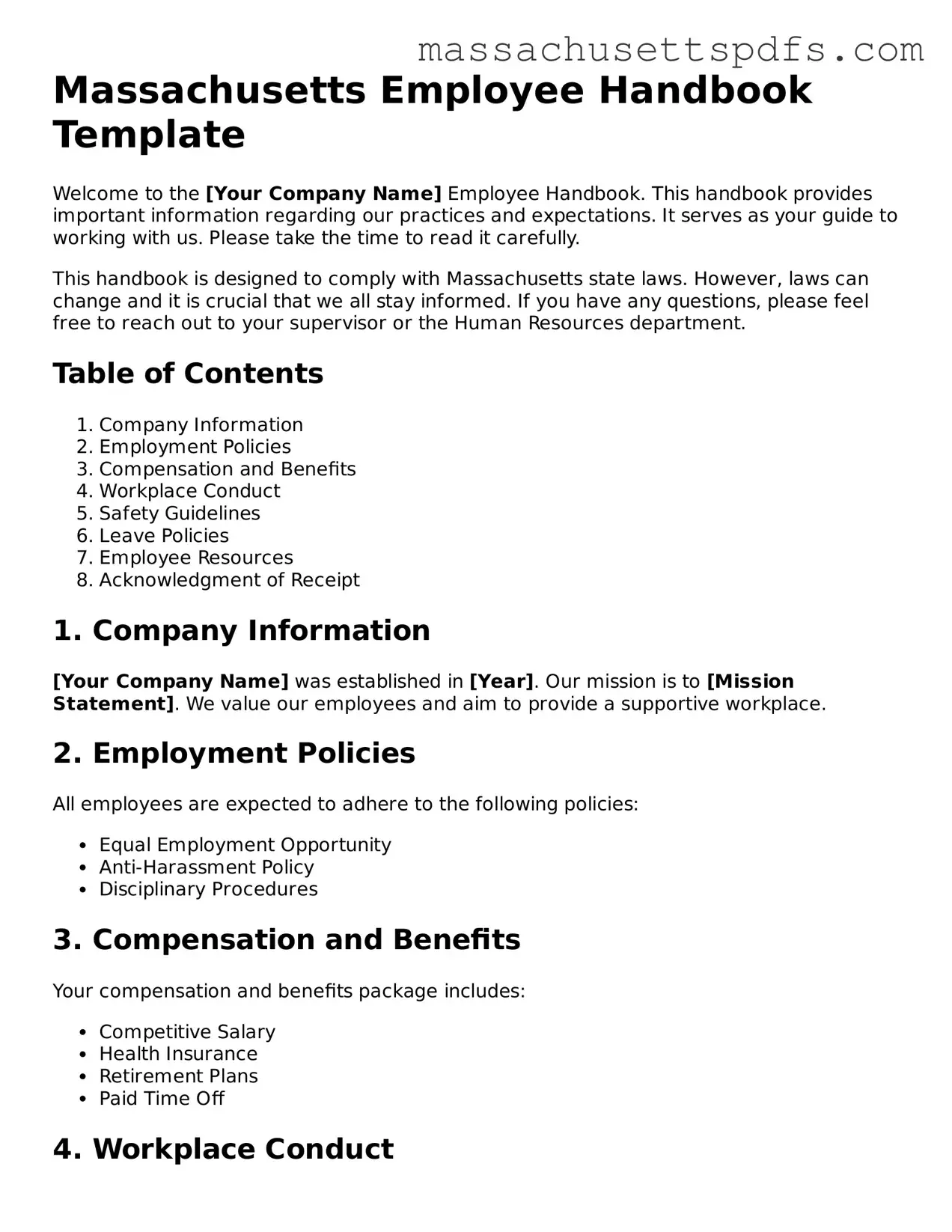Attorney-Approved Massachusetts Employee Handbook Document
The Massachusetts Employee Handbook form serves as a crucial document that outlines the rights and responsibilities of both employees and employers within the state. It provides essential guidelines on workplace policies, procedures, and expectations, ensuring clarity and compliance with state laws. To streamline your onboarding process, consider filling out the form by clicking the button below.
Launch Editor Here
